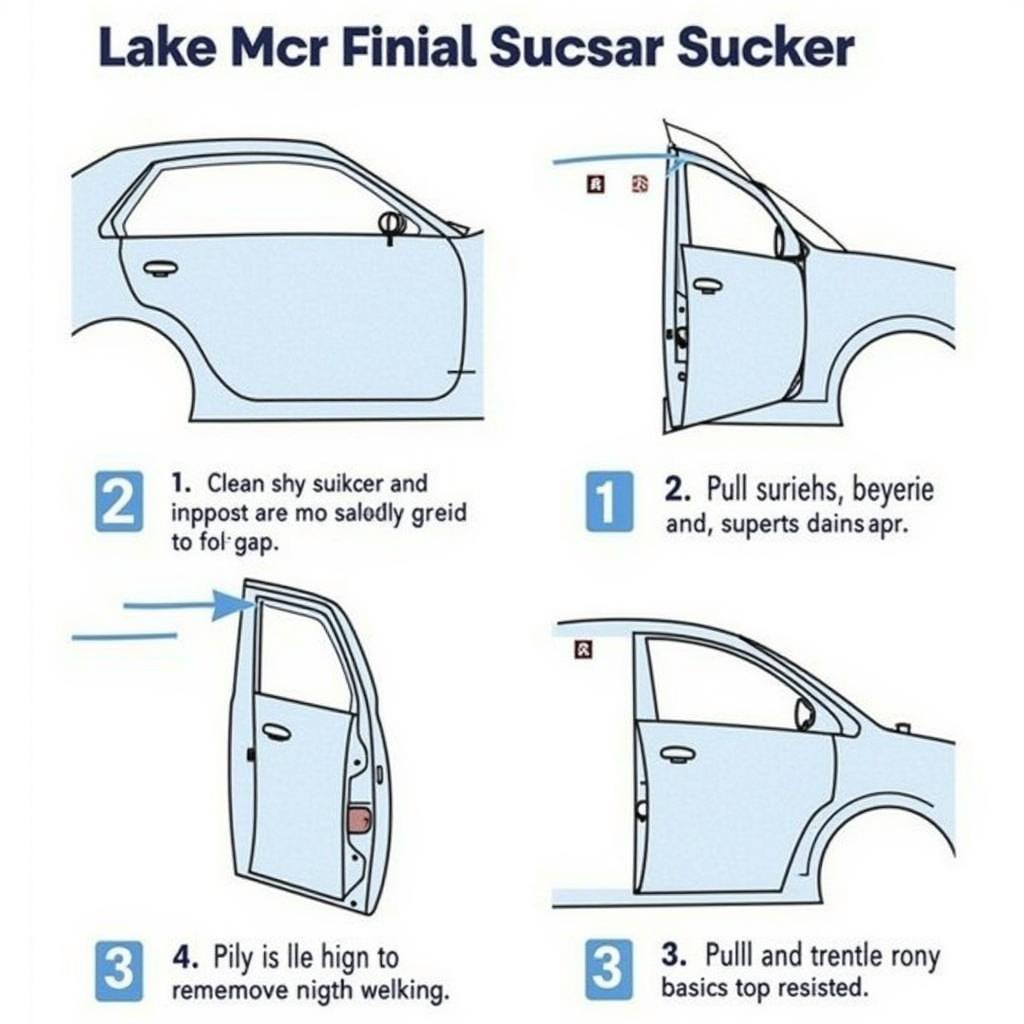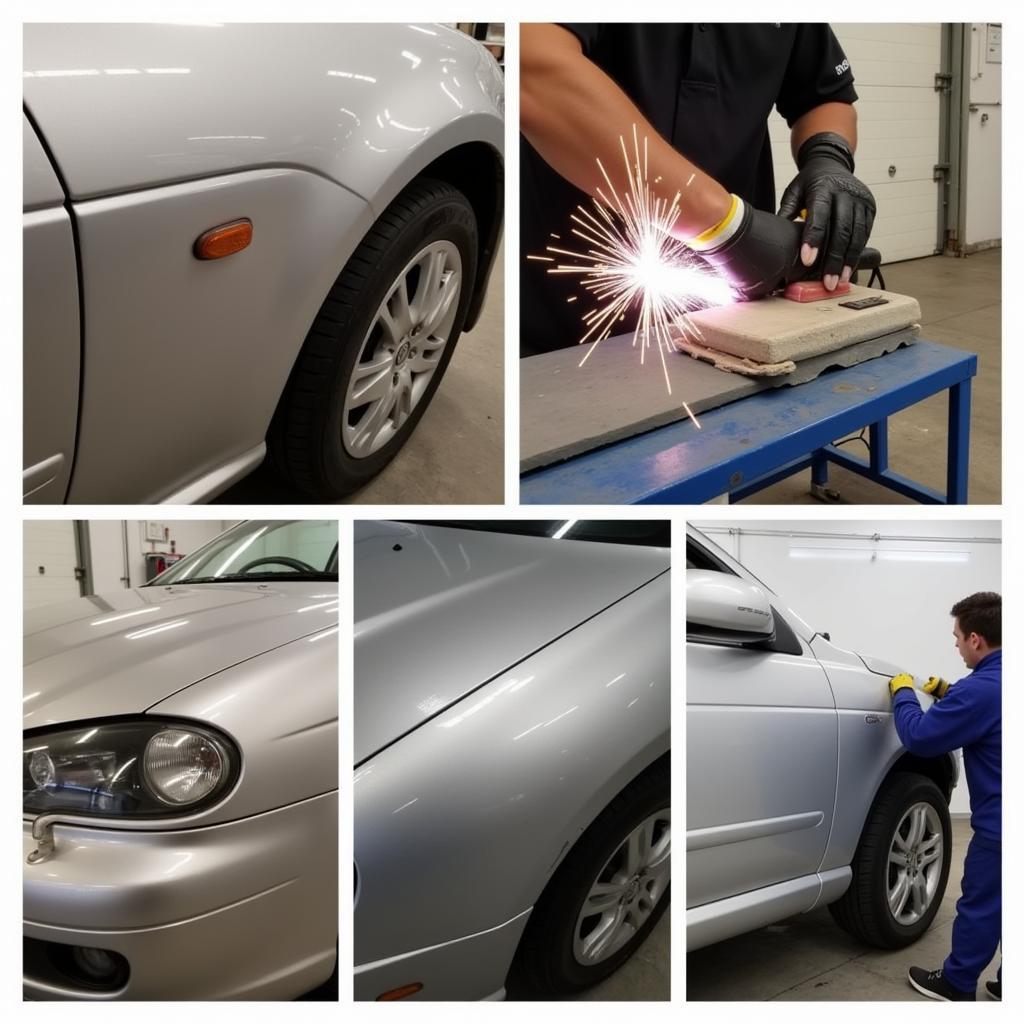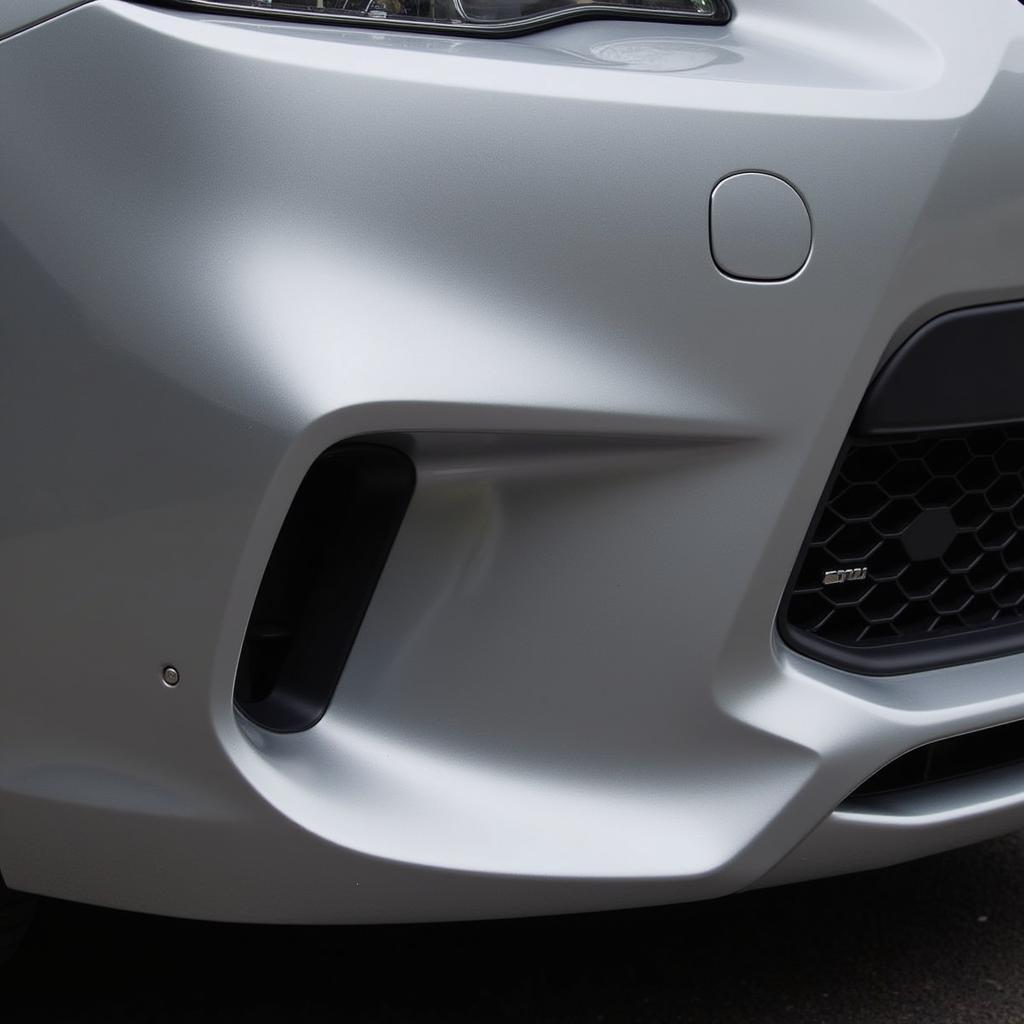
Properly Using a Car Body Repair Sucker
Car Body Repair Suckers are essential tools for any DIY enthusiast or professional looking to fix minor dents and dings without damaging the paint. Understanding how to choose and use these tools can save you time and money at the body shop. This guide will delve into everything you need to know about car body repair suckers, from different types and their applications to expert tips and common mistakes to avoid.
Types of Car Body Repair Suckers
There are various types of car body repair suckers available, each designed for specific applications:
- Cup Suckers: These are the most common type, featuring a single cup that creates a vacuum when pressed against the dented surface. They are ideal for smaller dents and pulling out shallow imperfections.
- Bridge Dent Pullers: These tools use two or more suction cups connected by a bridge-like structure. They provide more pulling power and stability, making them suitable for larger and deeper dents.
- Slide Hammer Dent Pullers: This type combines suction with a slide hammer mechanism to deliver powerful pulling force. They are effective on stubborn dents that don’t respond to standard suction methods.
- Specialized Suction Cups: Designed for specific areas like door panels and bumpers, these suckers come in different shapes and sizes to conform to curved surfaces.
How to Use Car Body Repair Suckers Effectively
Using car body repair suckers effectively requires a few simple steps:
- Clean the Surface: Thoroughly clean the dented area to ensure a strong suction seal. Remove any dirt, debris, or wax.
- Choose the Right Sucker: Select the appropriate sucker based on the size and depth of the dent.
- Apply the Sucker: Press the sucker firmly onto the dent, ensuring a good seal.
- Pull Gently: Apply gradual and even pulling force to avoid further damage. Multiple pulls might be necessary.
- Assess and Repeat: Check the progress and repeat the process until the dent is removed.
 Properly Using a Car Body Repair Sucker
Properly Using a Car Body Repair Sucker
Common Mistakes to Avoid
While car body repair suckers are relatively easy to use, there are a few common mistakes that can hinder their effectiveness:
- Using the Wrong Sucker Size: Using a sucker that’s too small or large for the dent can result in ineffective pulling or damage to the surrounding area.
- Pulling Too Hard: Excessive force can worsen the dent or damage the paint.
- Not Cleaning the Surface Properly: A dirty surface can prevent the sucker from creating a strong seal, reducing its effectiveness.
- Ignoring Underlying Damage: Suckers are primarily for minor dents. If there is underlying structural damage, professional repair is necessary.
Benefits of Using Car Body Repair Suckers
Car body repair suckers offer several advantages:
- Cost-Effective: They are a significantly cheaper alternative to professional bodywork for minor dents.
- Easy to Use: Even with minimal experience, anyone can learn to use these tools effectively.
- Time-Saving: Repairing small dents with suckers can save you a trip to the body shop.
- Non-Invasive: They can often remove dents without damaging the paint.
“Car body repair suckers are an invaluable tool for any DIYer. They’re incredibly effective for quickly and affordably addressing minor dents,” says John Davis, a seasoned auto repair specialist with over 20 years of experience.
When to Consult a Professional
While car body repair suckers are excellent for minor cosmetic damage, some situations require professional intervention:
- Deep Dents: Dents that have creased or sharply deformed the metal.
- Damaged Paint: If the paint is cracked or chipped, a sucker won’t fix the underlying issue.
- Structural Damage: Dents that involve underlying structural components require professional repair.
Conclusion
Car body repair suckers are a versatile and cost-effective solution for fixing minor dents and dings on your car. By following the proper techniques and avoiding common mistakes, you can achieve professional-looking results without breaking the bank. However, remember that these tools are best suited for minor cosmetic damage. For significant dents or underlying structural issues, consulting a professional auto body repair specialist is crucial. Using these simple tools can save you time and money while keeping your car looking its best.
FAQ
-
What type of sucker is best for small door dings?
Cup suckers are generally suitable for small door dings. -
Can I use a car body repair sucker on plastic bumpers?
Some specialized suckers are designed for use on plastic bumpers. -
How much force should I apply when pulling the dent?
Apply gradual and even pressure; avoid excessive force. -
What if the dent doesn’t come out completely?
Multiple pulls might be necessary, or the dent might require professional repair. -
Can I use these suckers on aluminum car bodies?
Yes, but ensure the sucker is compatible with aluminum surfaces. -
Are there any safety precautions I should take?
Always wear safety glasses and gloves while working with these tools. -
How do I clean the surface before applying the sucker?
Use a clean cloth and a suitable cleaning agent to remove dirt, debris, and wax.
For further assistance, please contact us via WhatsApp: +1(641)206-8880, or Email: [email protected]. Our customer service team is available 24/7.


